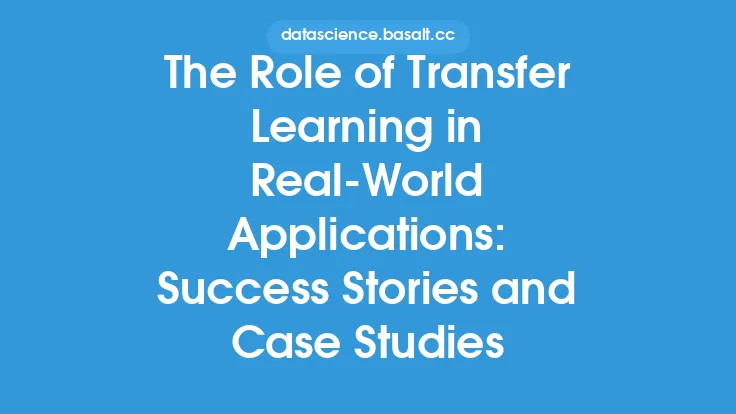The field of computer vision has experienced tremendous growth in recent years, with its applications expanding beyond the realm of academic research to real-world problems. This growth can be attributed to the increasing availability of large datasets, advancements in computational power, and the development of sophisticated algorithms. As a result, computer vision has become an essential component of various industries, including healthcare, transportation, security, and entertainment.
History and Evolution
The concept of computer vision dates back to the 1960s, when the first computer vision systems were developed. These early systems were primarily focused on image processing and recognition, with limited capabilities. Over the years, the field has undergone significant transformations, driven by advances in machine learning, signal processing, and computer graphics. The introduction of convolutional neural networks (CNNs) in the 1990s marked a major milestone in the evolution of computer vision, enabling the development of more accurate and efficient image recognition systems. Today, computer vision is a multidisciplinary field that combines concepts from computer science, electrical engineering, mathematics, and psychology to develop intelligent systems that can interpret and understand visual data.
Applications in Healthcare
Computer vision has numerous applications in the healthcare industry, ranging from medical image analysis to patient monitoring. In medical imaging, computer vision algorithms can be used to detect abnormalities, such as tumors or fractures, from images like X-rays, CT scans, or MRIs. These algorithms can also help in image segmentation, registration, and reconstruction, enabling doctors to make more accurate diagnoses. Additionally, computer vision can be used to develop personalized treatment plans, monitor patient progress, and detect potential health risks. For instance, computer vision-based systems can analyze medical images to detect early signs of diseases like diabetic retinopathy or cardiovascular disease.
Applications in Transportation
The transportation industry has also benefited significantly from computer vision. Autonomous vehicles, for example, rely heavily on computer vision to navigate through roads, detect obstacles, and avoid accidents. Computer vision algorithms can process visual data from cameras, lidar, and radar sensors to detect lanes, pedestrians, traffic signals, and other vehicles. This information is then used to control the vehicle's movements, ensuring a safe and smooth journey. Furthermore, computer vision can be used to monitor traffic flow, detect incidents, and optimize traffic signal control, reducing congestion and improving overall traffic efficiency.
Applications in Security and Surveillance
Computer vision plays a vital role in security and surveillance systems, enabling the detection and prevention of crimes. CCTV cameras equipped with computer vision algorithms can detect suspicious behavior, track individuals, and alert authorities in real-time. Facial recognition systems, which use computer vision to identify individuals, are also being increasingly used in security applications. These systems can help in identifying suspects, detecting intruders, and preventing unauthorized access to secure areas. Moreover, computer vision can be used to analyze surveillance footage, detect anomalies, and provide valuable insights to law enforcement agencies.
Applications in Entertainment
The entertainment industry has also seen significant contributions from computer vision. In film and video production, computer vision algorithms can be used to track objects, detect motion, and apply special effects. Computer-generated imagery (CGI) relies heavily on computer vision to create realistic animations and simulations. Additionally, computer vision can be used in video games to develop more immersive and interactive experiences. For instance, computer vision-based systems can track player movements, detect gestures, and respond accordingly, creating a more engaging and realistic gaming experience.
Technical Overview
From a technical perspective, computer vision involves a range of techniques, including image processing, feature extraction, object recognition, and machine learning. Image processing techniques, such as filtering, thresholding, and segmentation, are used to enhance and transform images into a format that can be analyzed by computer vision algorithms. Feature extraction techniques, such as edge detection, corner detection, and blob detection, are used to identify meaningful features within images. Object recognition algorithms, such as template matching, feature-based recognition, and deep learning-based recognition, are used to identify and classify objects within images. Machine learning algorithms, such as support vector machines, random forests, and neural networks, are used to develop predictive models that can classify images, detect objects, and recognize patterns.
Challenges and Limitations
Despite the significant advancements in computer vision, there are still several challenges and limitations that need to be addressed. One of the major challenges is the availability of large, high-quality datasets, which are essential for training and testing computer vision algorithms. Additionally, computer vision algorithms can be sensitive to variations in lighting, pose, and viewpoint, which can affect their accuracy and robustness. Furthermore, computer vision systems can be vulnerable to adversarial attacks, which can compromise their security and reliability. To overcome these challenges, researchers and developers are exploring new techniques, such as data augmentation, transfer learning, and adversarial training, to improve the accuracy, robustness, and security of computer vision systems.
Future Directions
The future of computer vision holds much promise, with potential applications in areas like robotics, augmented reality, and the Internet of Things (IoT). As computer vision algorithms become more accurate and efficient, we can expect to see more widespread adoption in industries like healthcare, transportation, and security. Additionally, the development of new technologies, such as 3D vision, event-based vision, and explainable AI, will enable computer vision systems to perceive and understand the world in more sophisticated ways. Furthermore, the increasing use of computer vision in edge devices, such as smartphones and smart home devices, will enable more personalized and interactive experiences, transforming the way we live and work. As computer vision continues to evolve, it is essential to address the challenges and limitations associated with its development and deployment, ensuring that its benefits are realized while minimizing its risks and negative consequences.





